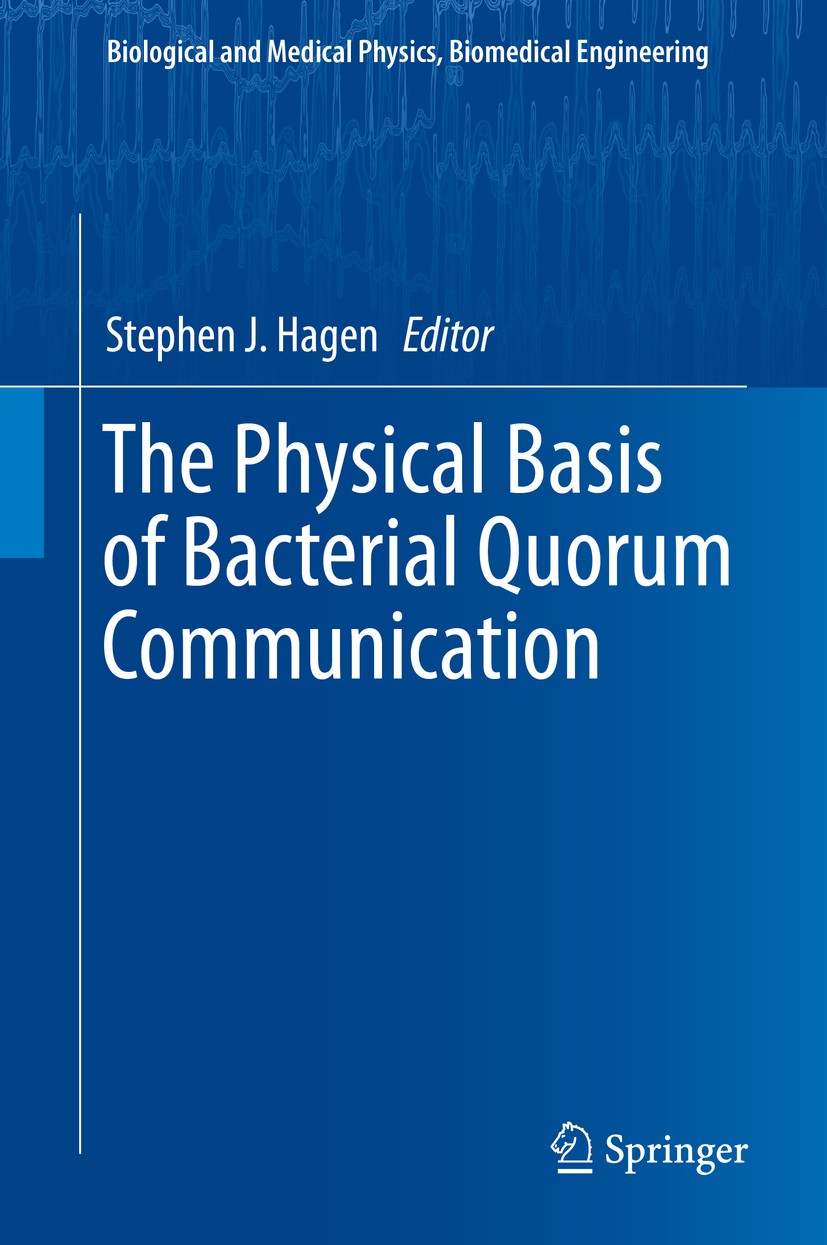| 书目名称 | The Physical Basis of Bacterial Quorum Communication |
| 编辑 | Stephen J. Hagen |
| 视频video | http://file.papertrans.cn/917/916390/916390.mp4 |
| 概述 | Analyzes bacterial quorum sensing from a physical and mathematical perspective.Explores the role of spatiotemporal diffusion, regulatory dynamics, stochasticity and information in quorum communication |
| 丛书名称 | Biological and Medical Physics, Biomedical Engineering |
| 图书封面 |  |
| 描述 | Quorum sensing (QS) describes a chemical communication behavior that is nearly universal among bacteria. Individual cells release a diffusible small molecule (an autoinducer) into their environment. A high concentration of this autoinducer serves as a signal of high population density, triggering new patterns of gene expression throughout the population. However QS is often much more complex than this simple census-taking behavior. Many QS bacteria produce and detect multiple autoinducers, which generate quorum signal cross talk with each other and with other bacterial species. QS gene regulatory networks respond to a range of physiological and environmental inputs in addition to autoinducer signals. While a host of individual QS systems have been characterized in great molecular and chemical detail, quorum communication raises many fundamental quantitative problems which are increasingly attracting the attention of physical scientists and mathematicians. Key questions include: What kinds of information can a bacterium gather about its environment through QS? What physical principles ultimately constrain the efficacy of diffusion-based communication? How do QS regulatory networks |
| 出版日期 | Book 2015 |
| 关键词 | Chemical Communication; Diffusion; Information Theory; Microbiology; Noisy Quorum Systems; QS; QS Regulato |
| 版次 | 1 |
| doi | https://doi.org/10.1007/978-1-4939-1402-9 |
| isbn_softcover | 978-1-4939-4736-2 |
| isbn_ebook | 978-1-4939-1402-9Series ISSN 1618-7210 Series E-ISSN 2197-5647 |
| issn_series | 1618-7210 |
| copyright | Springer Science+Business Media New York 2015 |
 |Archiver|手机版|小黑屋|
派博传思国际
( 京公网安备110108008328)
GMT+8, 2025-12-18 04:43
|Archiver|手机版|小黑屋|
派博传思国际
( 京公网安备110108008328)
GMT+8, 2025-12-18 04:43


